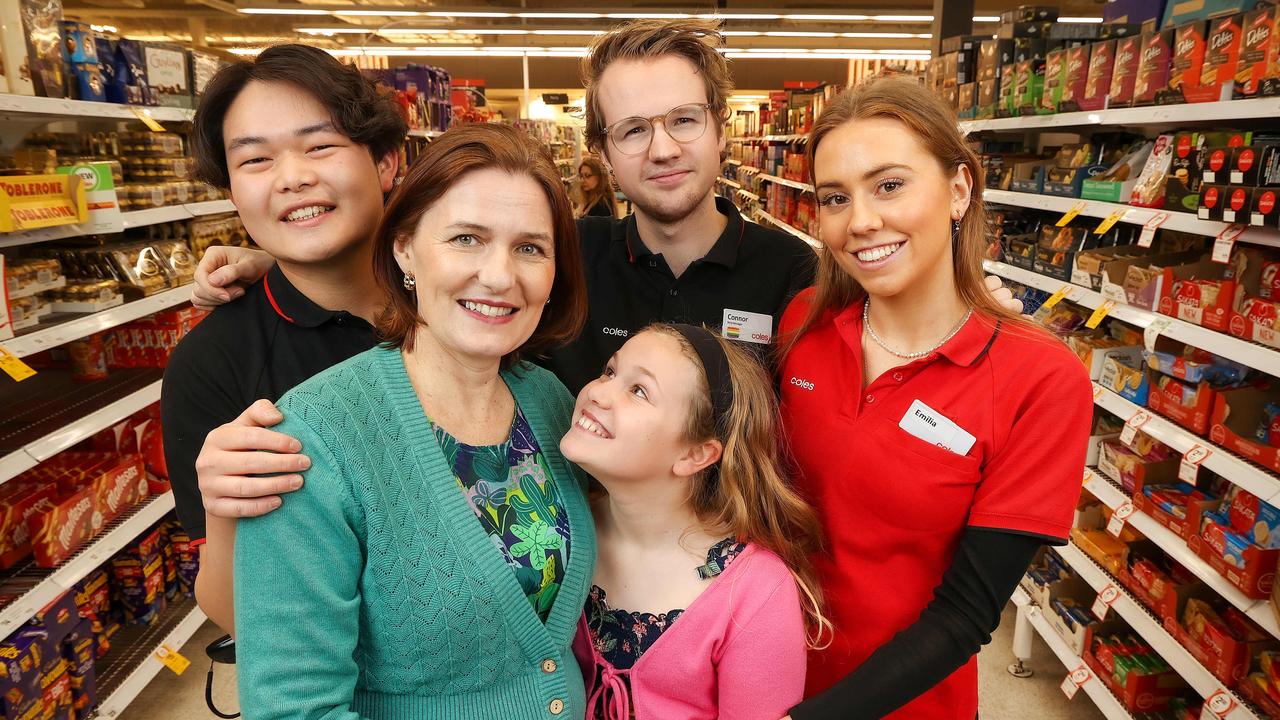How home entertainment has changed since the days of Betamax, the Walkman and TV licences
REMEMBER the days of the Walkman, Betamax and record players that doubled as sideboards? In a few short decades home entertainment has truly transformed.
VIC News
Don't miss out on the headlines from VIC News. Followed categories will be added to My News.
IN a few short decades, we have gone from records to digital music and from VHS to streaming.
Technology and the internet have transformed our homes and our lifestyles in the decades since radio dominated Australia’s media landscape.
WHAT LIFE IS LIKE AT BOARDING SCHOOL
RADIO
Melbourne joined the radio age when 3AR (now Radio National) began operating in January 1924, followed by 3LO (now ABC Melbourne) in October that year.
Both were privately owned but were soon taken over by the ABC. By the 1930s, stations including 3AW, 3XY and 3KZ had appeared on the dial in Melbourne, with more in regional Victoria, and many families would gather around the wireless in their lounges for a variety of live and recorded programs.
Formatting, as we know it, didn’t exist. Radio was a grab bag of live radio plays, quizzes, music and variety shows; recorded serials and documentaries; and presentations of recorded music and specialist topics.
By the ‘70s, formats were deeply entrenched in radio but the game changed when FM hit the airwaves, first with 3MBS in 1975, then in 1980 with Australia’s first two commercial FM stations, EON and FOX.
Like the AM stereo push in the late 1980s, it seems modern digital radio has been slow to catch on.
TELEVISION
The family radio was at the heart of many Melbourne homes until television arrived in 1956 — just in time for the Olympic Games.

In regional areas, though, TV came later — to Shepparton and the Goulburn Valley, Bendigo and northern Victoria and Traralgon and the Latrobe Valley in December 1961, followed by Ballarat and western Victoria (1962), Albury/Wodonga (1964) and Mildura in 1965.
In the early days of TV, not everyone could afford one of these newfangled glowing orbs, and in the evening families gathered outside the front of TV retailers to watch the screen on display.
As technology developed in the early 1960s, relay networks beamed programs between the big cities and across regional Victoria, allowing stations to share live programming including national news services.
Melbourne gained ATV-0 in 1964, which launched from new studios in Nunawading.
The advent of colour television in Australia came much later in Australia in other parts of the world, delayed until March 1, 1975 because of the cost of Australia’s involvement in the Vietnam War.


Televised football was common in Victoria for years, but the first live VFL grand final broadcast was the classic drawn grand final between North Melbourne and Collingwood in 1977.
In January 1980, Channel 0 became Channel 10, and the capitals gained a fifth TV station when SBS launched in October that year.
Regional Victorians received access to all city TV stations when aggregation was completed in 1992, but a rich tradition of local broadcasting was wiped out in the process.
Melbourne got a sixth channel, community-based Channel 31, in 1994.
Before Apple TV, Netflix and the streaming services we know today, the pay TV era began on Australia Day 1995 when Galaxy launched. Foxtel followed in 1999, and has since seen off Galaxy and other competitors including Optus Vision, Austar, SelecTV, TransTV and Neighbourhood Cable (which ran a small cable service in Mildura, Ballarat and Geelong).
Multichannel digital television was introduced during the 2000s, giving viewers much more choice. It meant bigger screens, better resolution and more choice for consumers. The last analogue services disappeared in December 2013.
It also did away with any need for “rabbit ears” — the indoor antennae that often accompanied older TV sets.

RADIO AND TELEVISION LICENCES
In the early days, before we could legally enjoy radio or television, we needed to buy an annual radio and television licence.
This unpopular tax was enforced by roving inspectors with the power to fine transgressors, and was frequently ignored tax on home entertainment was finally abolished by the federal government in 1974.
MASS MEDIA DEVICES AS FURNITURE
Large, highly polished timber radios were a feature of many homes before television arrived.
This was, at least in part, to conceal the large valves and bulky electrical systems that ran them.


A similar, although more streamlined approach was taken by television manufacturers in the early days, housing screens that by today’s standards were absolutely tiny.
Radiograms, polished timber cabinets housing a record player (replacing older stand-alone gramophone-style units) with an AM radio, large self-contained speakers and room to store records became popular in the 1960s and ‘70s, before plastics and chipboard became standard, and cassette tapes and CD players arrived.
Back in the 1970s and ‘80s, a television with a teak cabinet was the hallmark of quality. That was before larger screens and TV projectors began appearing in the ‘90s.
THINGS GOT SMALLER … AND BIGGER
The transistor caused an electronics revolution around the world, allowing radio and TV manufacturers to shrink their designs.
This meant less timber and more screen for televisions, and radios that were small enough to carry to the footy, or picnics, or the beach.


It also meant we could have radios inside our cars, so we could listen to music, news and sport anywhere we wanted. Portable record players were also popular.
The advent of the Sony Walkman in 1980 launched a rash of personal stereos that combined an AM/FM receiver with a cassette player, bringing personal choice to mobile music for the first time.
Digital recording allowed personal MP3 players such as the iPod, putting thousands of songs in the palms of our hands.
While music shrunk, digital TV’s high resolution delivered television screens that look like drive-in screens compared with the tiny, black-and-white screens we once knew.
PERSONAL CHOICE
Once, radio and television consumers had to accept what broadcasters provided or switch off.
More stations or channels gave us more choice, but what we consumed was still curated by others.

The advent of video cassette recorders in the late ‘70s allowed consumers to play movies they’d purchased and to record television programs to watch at times that suited us — and to scroll through the advertisements.
VHS triumphed over the earlier, and some suggest superior, Betamax format.
The first DVD players arrived in Australia in early 1999, giving viewers access to digital picture clarity. The compression of information on DVD disks also allowed us to collect films and TV series in volumes.

Records, audio and video cassettes, and CDs and DVDs required storage solutions.
Shelves, cassette drawers and CD towers became part of Australian homes as the “personal programming” jumped through different formats.
Now, of course, we live in an age when we can watch what we want when we want via streaming, and the devices that we use to store masses of content can be held in your hand.
@JDwritesalot


